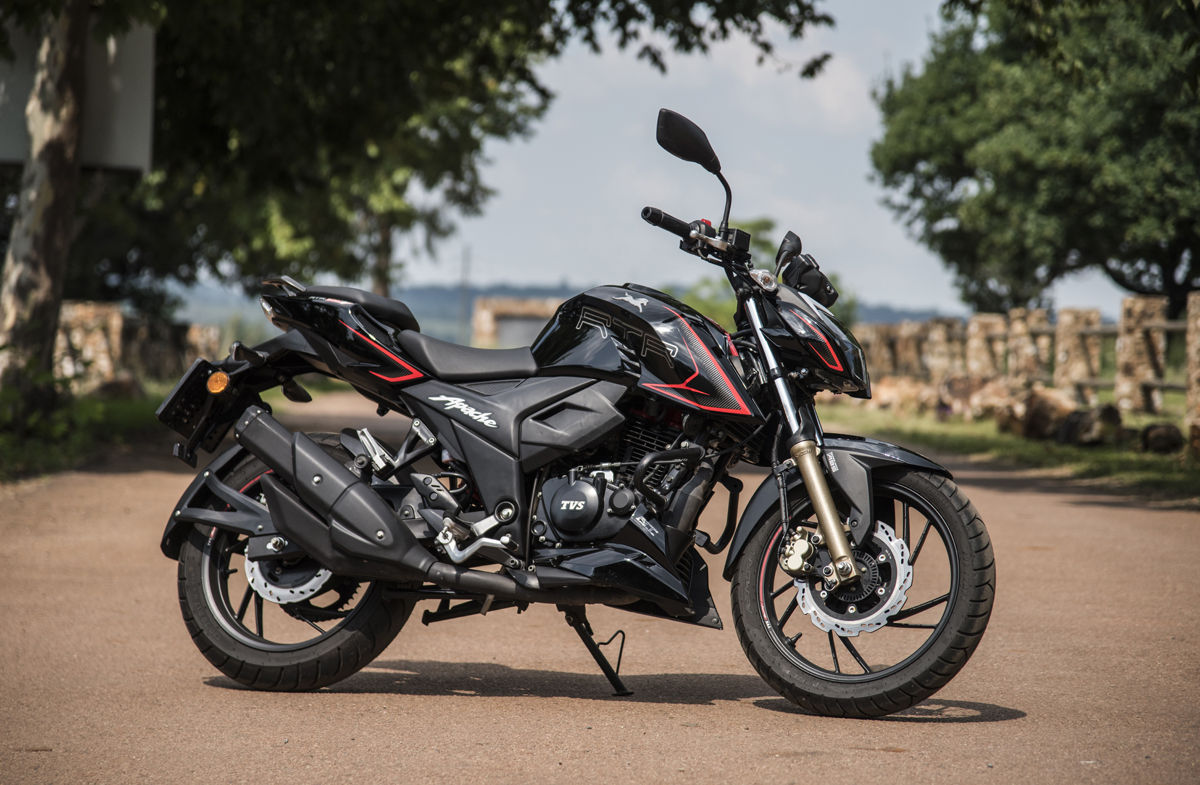
I don’t think it would be too far off the mark for me to claim to have more experience on TVS Apache motorcycles than anyone else in South Africa. It all started with the ‘Apache Indians Raid Victoria Falls’ in 2011 which was followed by the ‘Delta Dawdle’ a couple of years later. I led a band of ‘Apacheans’ on two epic unsupported tours through Botswana, down the Caprivi, as well as to Victoria Falls and back down through Zims. The reliability, comfort and fuel economy of the Apaches blew us all away.
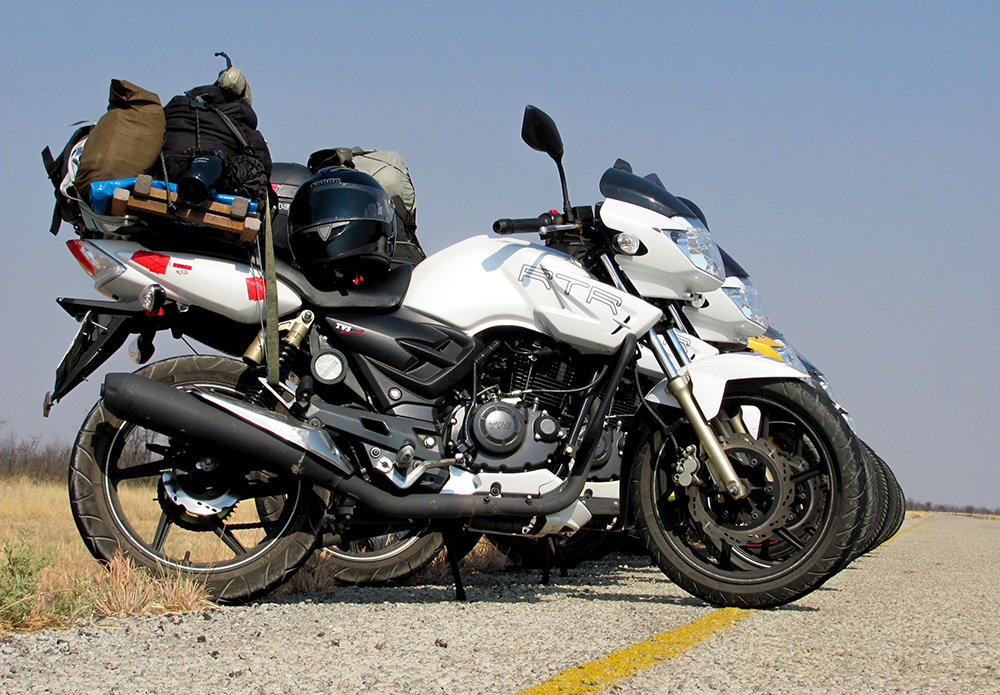
With ETG bringing a whole range of TVS motorcycles into SA, I couldn’t wait to lay my hands on the latest version of the Apache, the RTR200 – 4V. WOW! It is a very different beastie indeed.
Let’s address the elephant in the room. Quality. There has, in recent years, been an explosion of small cc bikes entering the SA market on the back of extortionate fuel prices. Most of these have been of Chinese origin. Cheap and cheerful may be a kind way of describing them. It is not uncommon to see the same bike being sold by at least three different brands. It has you wondering just who to appeal to if something serious goes wrong with your bike.
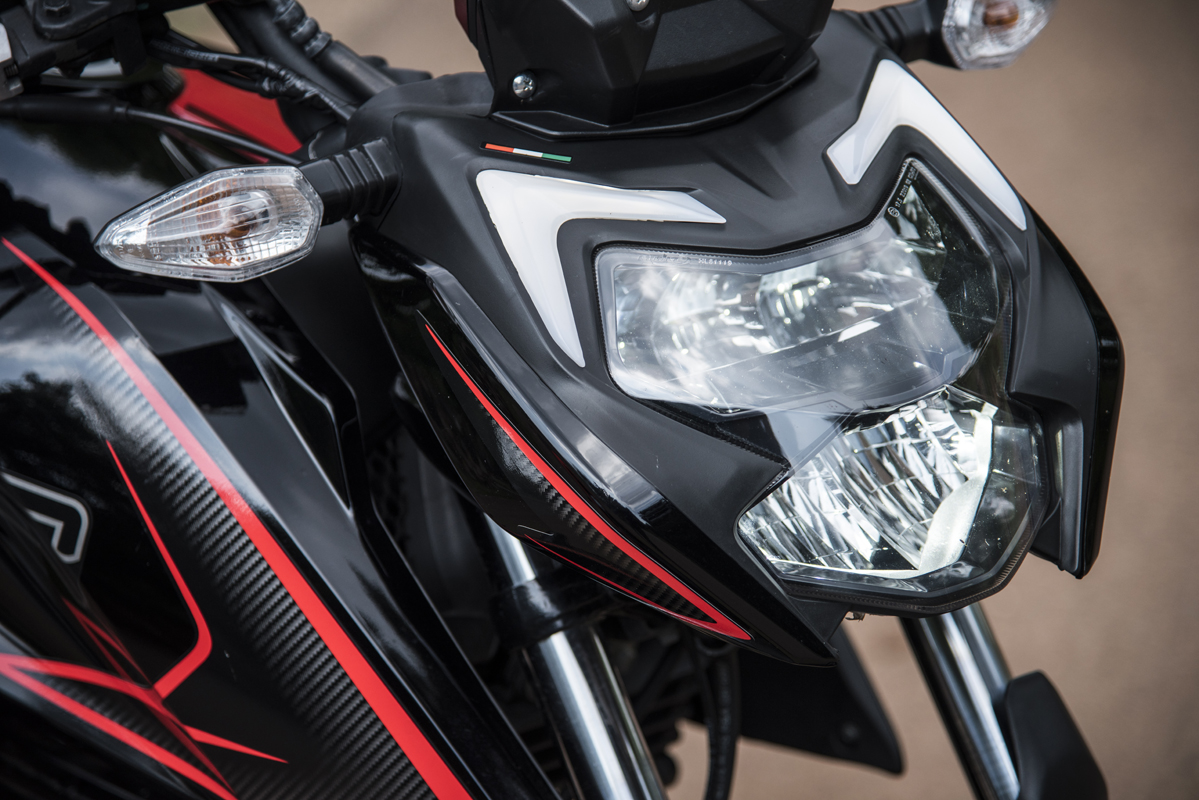
What the Indian-built bikes bring to the market is something very different. Having visited India and the TVS factory in Hosur in particular, I was struck by the intense passion and pride with which these bikes are designed and built. Little wonder then that BMW Motorrad saw fit to have their 310cc bikes built by TVS in a successful joint venture. TVS has established a brand which is synonymous with quality and reliability, generating tremendous peace of mind for potential customers.
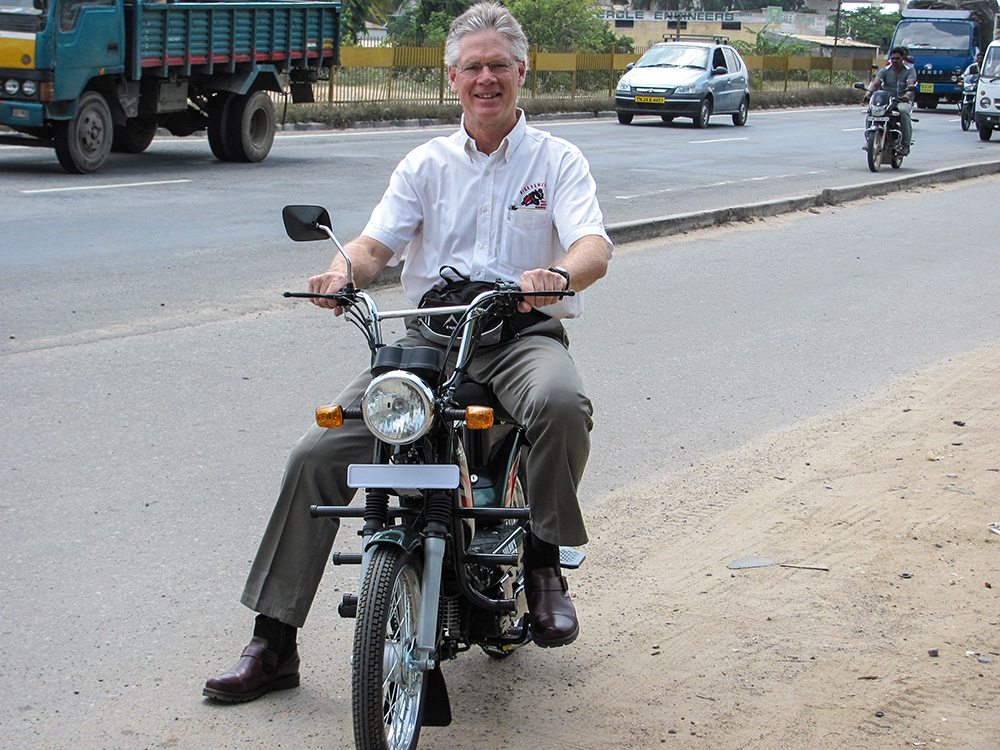
TVS have campaigned very successfully in the 200cc class in road racing in India for just on 38 years. Much of what they have learned in the harsh cauldron of competition has found its way into the Apache. The latest version is testimony to that. The engine is an oversquare 197,75cc 4-stroke single with an overhead camshaft and 4-valves. It is air/oil-cooled, sporting a decent-sized oil cooler in its nose. Power is a respectable 20,82 PS @ 9000 rpm and 17,25 Nm of torque @ 7500 rpm, driving through a slick 5-speed gearbox.

The chassis is where the RTR200 shines. Showa forks which are adjustable for preload grace the front, with a preload adjustable mono-shock controlling rear wheel movement. The steel frame is taught and this all combines to really decent handling, clearly a benefit of the racing heritage. The ride is firm yet supple and controlled, totally at odds with what you would expect from a bike in this segment and price point.
Brakes are by discs on both wheels and, whilst requiring firm lever pressure, provide decent linear stopping power with no grabbiness. Wheels are tubeless alloy mags (great for plug, pump and play roadside puncture repairs) with a 90/90×17 up front and a 130/70×17 on the back. Seat height is accessible to all at 800 mm. Speaking of the seat, the foam density is superb, providing genuine all-day comfort.
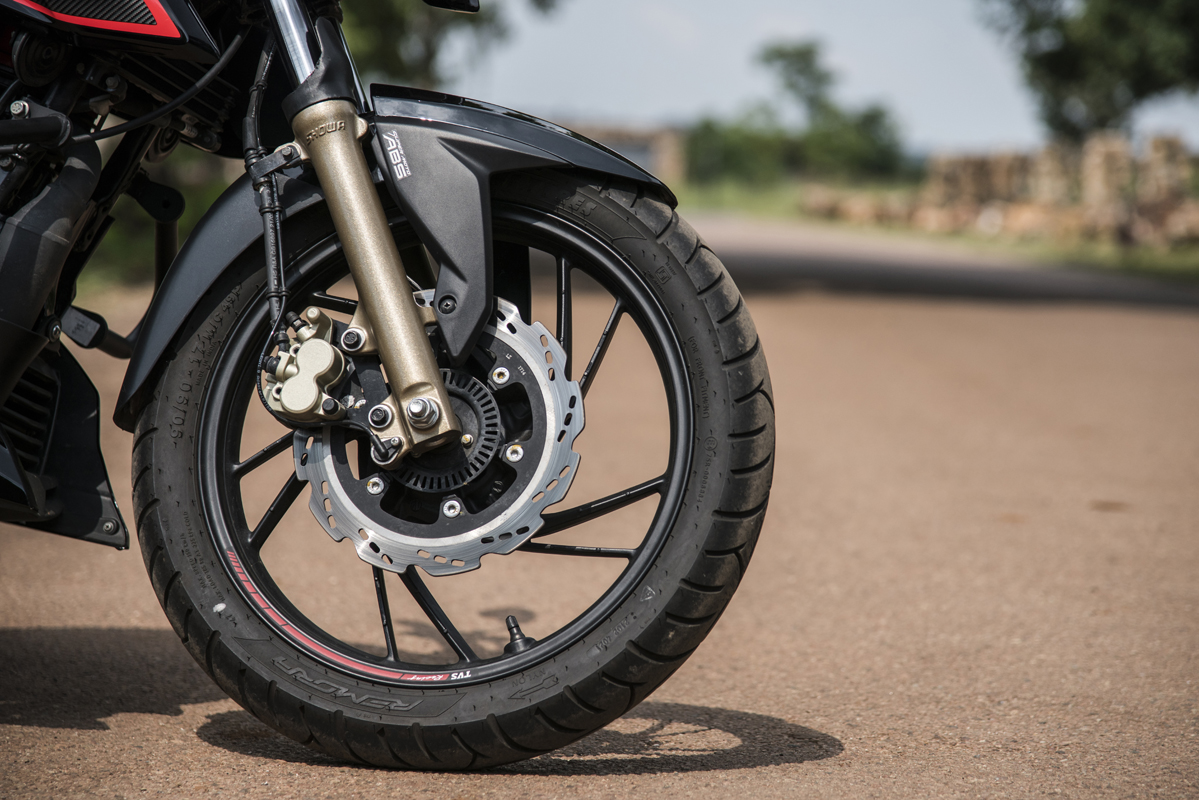
The RTR is equipped with both a side and main stand, which makes cleaning and chain maintenance a doddle. The side stand could be a bit longer though, with the bike leaning over at a serious angle when employed. It certainly won’t fall off the side stand in a stiff breeze! Function is essential, but it becomes all the more appealing when the ‘form’ is attractive too. The TVS Apache RTR200 4-V is a serious looker!
The test bike was a shiny black with red highlighting, featuring lovely Apache raised mustang logos on the tank. This is all packaged in totally modern lines complemented by LED lighting and daytime running lights. The exhaust is interesting in that it is black and slim with an expansion box attached to the underside, negating the need for the typical box underneath the bike which robs ground clearance. It emits a surprisingly fruity burble on start-up.

Instrumentation is comprehensive, with all the typical info you need to know displayed in an attractive digital display. Allied to that is TVS’s Connect, an app by which you can access turn-by-turn navigation operating via blue tooth to your phone. There is even a lean angle readout with which to claim bragging rights. Got to appeal to the Playstation Generation after all. Taking all of this in and familiarising myself with the new Apache got me really looking forward to the ride.

Turn the key and the dash tells you to Gear Up and welcomes you as an Apachean, this all before you press the start button. An immediate difference to my ‘old’ 180 Apache is the lack of a kick start as well as the immediacy with which the RTR200 fires up and settles into a remarkably steady idle, all courtesy no doubt to the new fuel injection. You have three rider modes to choose from. Sport, Urban and Rain. Having experienced India first-hand, as well as seen the effects of the monsoon on the roads, these modes are not as gimmicky as you might think. Urban limits your top end to just over 105 km/h, so Sport is the obvious choice for SA. Fuelling is faultless in all modes.
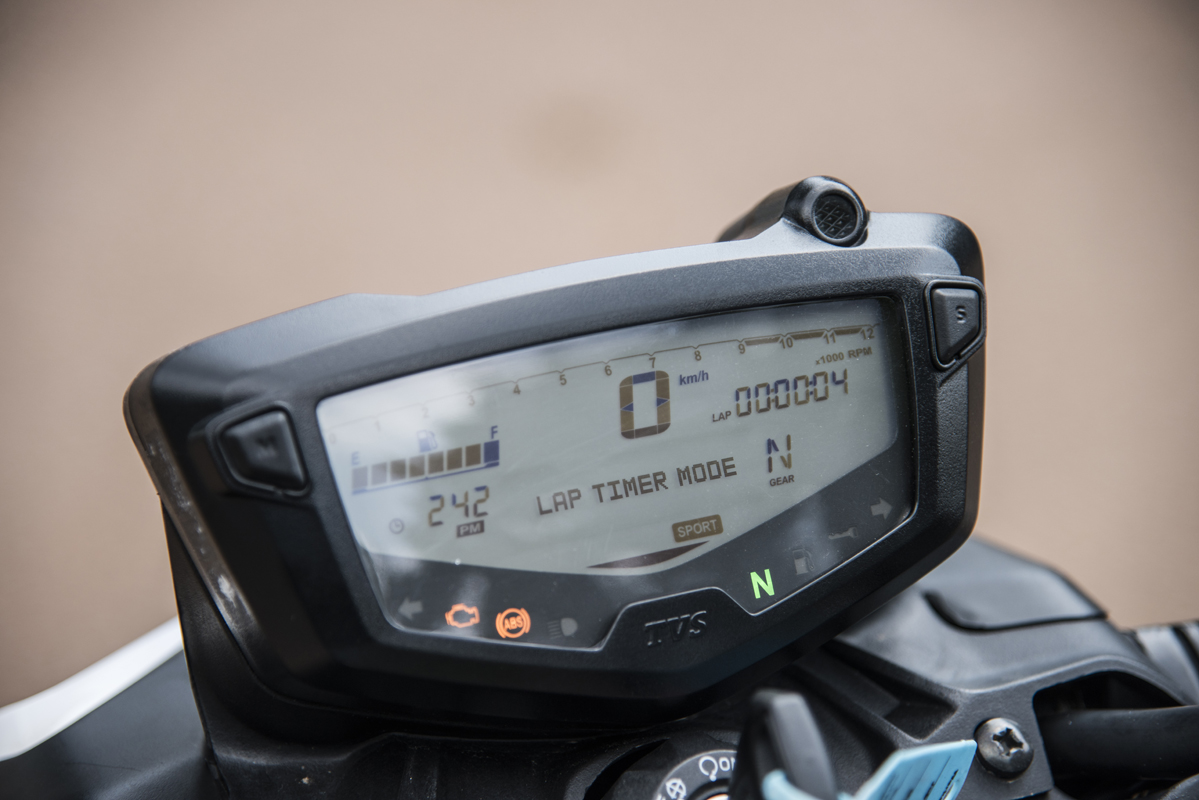
The brake and clutch levers are both adjustable, so fitting the RTR to you is a doddle. The bars fall comfortably to hand with the rider in a slight forward lean but without excessive weight on your wrists. Legs fit snugly into the recesses in the tank and the pegs are mildly rear-set into what is a sporty yet comfortable riding position. The rearview mirrors give you a decent view of the traffic behind you and remain clear at all speeds. I literally pulled away and knew I was going to enjoy this little Apache. The motor is smooth, torquey and willing. Allied to the slick gearbox it makes for decent progress. It is no problem at all to dispatch typical city traffic. The slim dimensions and nimble handling allow you to filter with ease.

It is not uncommon to see a family of four on an Apache in India. Highway speeds in India are also significantly lower than in SA due to sheer traffic volumes. In that scenario, a five-speed gearbox is just fine as you will seldom need to cruise faster than 100 km/h, at which speed the TVS is totally chilled with a few thousand revs in reserve. In SA we need to travel a bit faster. I went up one tooth on the front sprocket of my 180 and found that it performed better all round. 4th became a better overtaking gear and fifth was more relaxed, cruising with ease at 110 km/h. Long hills saw the 180 shedding speed, dropping from 120 odd to around 110 by the crest of the hill. Riding the same hill on the 200 was a totally different ballgame, with the RTR running all the way to the top at 129 km/h.
With the torque peak coming at 7500 rpm, you are actually revving out of the torque. A tooth bigger on the front would drop you smack back into the maximum torque and give you a higher cruising speed which is ideal. I believe that the already outstanding economy would get even better too. Coming back from Jo’Burg I hit a monster storm. In my endeavours to outrun the rain I tucked in and gave the little RTR its head. I was gobsmacked to see that the top speed logger showed that I had nudged 148 km/h. It must have been revving into the red. I was too unnerved to repeat the run to see exactly what it was revving. The bike was so smooth and composed that it didn’t feel strained at all.
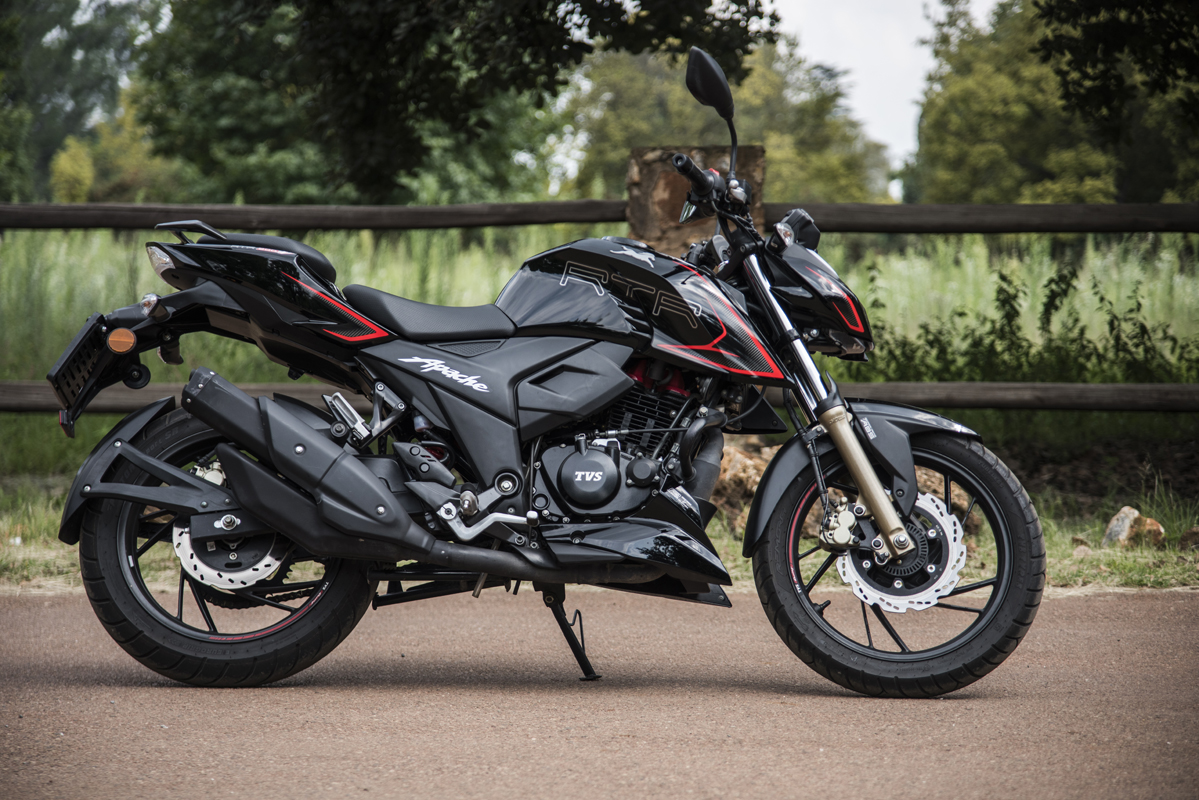
Generally, the TVS ran the highway with ease. I, for the reasons mentioned above as well as for sheer mechanical sympathy, would definitely recommend a tooth bigger on the front sprocket. A R200 mod that will transform the bike for SA conditions (watch this space for more on this). Despite this sort of robust riding, as well as thoroughly putting the excellent handling repeatedly to the test, the RTR200 returned 33 km/L, which translates to 400 k’s on the 12-litre tank. Looking at independent Indian tests of the RTR, I saw figures of 47 km/L in the city and 49,81 km/L in the country. I have no doubt that I could improve massively on fuel consumption with more ‘normal’ town and around riding.
The TVS Apache RTR200 4-V is considered the segment leader in India, and for good reason. It is a thoroughly modern, refined, comprehensively equipped, comfortable and sweet handling package which in many ways punches way above its weight. I actually gifted a friend of mine my Apache 180 as he was going through some very hard times and I was trying to lighten his load. The RTR200 made me realise how much I have missed an Apache in my life. It is quite possibly the urban dweller’s best friend. I definitely see an Apache RTR200 4-V in my future. The allure of another Delta Dawdle on this brilliant little motorcycle is just too hard to resist.

At R41,999 (while stocks last, as they say in the classics) it is an absolute bargain. Become an Apachean and thumb your nose at the fuel prices. Your fuel saving will literally buy the bike for you.
For more information visit: www.tvsmotor.com





